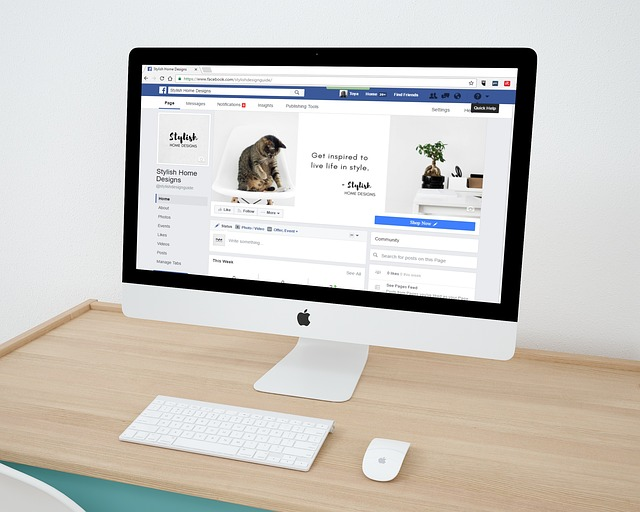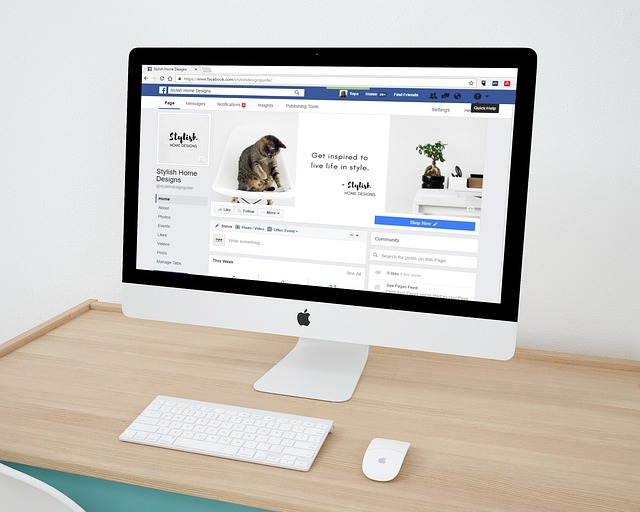We’ll increase conversions by
20-100+%
on your website.
Get a FREE Audit today
See how we can help your business increase conversion rates
Ultimate Guide To Website Design For Small Businesses: Tips And Examples

Introduction
In today’s digital world, a well-designed website is crucial for the growth and success of any small business. Are you ready to level up your online presence and outshine the competition? Dive into our ultimate guide to website design for small businesses, as we reveal must-know tips, best practices, and real-world examples that will empower you to create an exceptional virtual storefront. Keep reading to unlock the secrets of crafting a stunning, user-friendly site that not only captivates visitors but also boosts your bottom line!
Why Website Design Is Crucial For Small Businesses

Effective website design is crucial for small businesses as it establishes trust and credibility, improves user experience, increases online visibility, boosts conversion rates, and builds brand recognition.
Establishing Trust And Credibility
Establishing trust and credibility is a fundamental aspect of website design for small businesses. A well-designed, professional-looking website can instill confidence in potential customers, demonstrating that your business is reputable and reliable. By incorporating key design elements such as high-quality visuals, clear navigation, and up-to-date information, you can effectively communicate your company’s commitment to providing excellent products or services.
When designing a website for a small business, it’s essential to focus on transparency and relevance of visitor information, as part of building trust with your audience. Providing comprehensive information about your products or services – including detailed descriptions, pricing options, and testimonials from satisfied customers – will help visitors feel more comfortable making a purchase decision. Additionally, maintaining an aesthetically pleasing layout with consistent branding throughout the site allows users to quickly recognize your business’s identity, further solidifying their perception of its credibility.
In today’s digital age where online scams are increasingly common; ensuring that your website clearly communicates trustworthiness is crucial for success. Not only does this make potential customers feel safer when engaging with your brand online but also helps search engines rank you higher based on quality signals like design standards and user experience metrics – ultimately leading to greater visibility in search results among competitors vying for attention within the same marketplace niche.
Improving User Experience
In the realm of website design for small businesses, a strong focus on enhancing user experience is paramount. By prioritizing user experience and ensuring that your site provides an engaging, interactive journey for visitors, you’ll not only foster customer satisfaction but also improve your search engine rankings. One effective approach to refining user experience involves streamlining navigation; this means organizing your content management system efficiently and minimizing any potential pitfalls or hurdles users may face when exploring your online store.
Another crucial aspect of improving the overall user experience on a small business website is optimizing it for mobile devices. With more people relying on their smartphones to browse the web, having a mobile-responsive site will enable users to access information easily and make purchases seamlessly through their preferred device. Additionally, working with top notch web design companies can provide valuable technical expertise and guidance as you develop an intuitive layout optimized for various screen sizes – ensuring longer-lasting success in today’s fast-paced digital marketing landscape.
Increasing Online Presence And Visibility

In today’s digital age, having a strong online presence is essential for small businesses. A well-designed website can increase visibility and attract potential customers to your business. By utilizing effective SEO strategies and incorporating clear calls-to-action, you can improve your chances of being found on search engines like Google.
It’s also important to have an active social media presence as it allows you to engage with your audience on a more personal level and increases brand recognition. Posting relevant content that speaks directly to your target audience can help increase engagement, which in turn translates into higher conversion rates. Additionally, paid advertising through platforms such as Facebook Ads and Google Ads can further boost online visibility for your business.
Boosting Conversion Rates
An effective website design can do much more than just producing a visually stunning site. It can help small businesses increase their conversion rates by creating smooth navigation that guides users to the right pages, minimizing distractions and focusing on clear calls-to-action(CTA). With well-designed CTA buttons, such as “Buy Now,” “Sign Up” or “Learn More,” you can lead your visitors seamlessly from motive awareness to call-out and eventually to sale.
Another important part of converting more website visitors is ensuring that the content is skimmable and readable. A clean layout with short paragraphs, bullet points,and headings make it easier for people quickly find what they need from your site without getting overwhelmed by a huge number of blocks of text. In fact, according to research, 60% of consumers who log onto a company’s mobile-friendly site are likely to convert into paying customers.
Building Brand Recognition
Building brand recognition is essential for small businesses to establish a strong online presence. Consistent visual branding elements such as colors, fonts, and logos help customers identify and recognize the business quickly. Well-executed branding also creates an emotional connection between consumers and the company, which leads to increased sales and customer loyalty.
Another crucial aspect of building brand recognition is delivering a consistent high-quality experience across all digital experiences at all touchpoints. This includes everything from website design elements like user-friendly navigation and engaging visuals to providing excellent customer service. By aligning every facet of their business with their brand identity, small businesses can create an unforgettable impression on potential customers that drives real results.
Key Elements Of Effective Website Design For Small Businesses

Effective website design for small businesses should have several factors that include user-friendly navigation, mobile responsiveness, engaging visuals, clear calls-to-action, and SEO-friendly design.
User-friendly Navigation
User-friendly navigation is one of the most important aspects of website usability for small businesses. It’s essential to avoid cluttered and confusing menus, as visitors might click away if they can’t find what they’re looking for quickly. Simple HTML or JavaScript menus tend to work best, with clear categories that are easy to understand.
The navigation impacts whether visitors arrive on the homepage and browse, or click away. A well-designed navigation structure can help guide users through a site effectively, while a poorly designed one can lead to frustration and confusion. Main navigation should be used to tell people and search engines about what the business does, so it’s crucial to keep it simple yet descriptive. By focusing on user-friendliness in website design, small businesses can create positive first impressions with potential customers and keep them coming back for more.
Mobile Responsiveness
Mobile responsiveness is a crucial element in website and web design for small businesses. With more and more people browsing the internet from their mobile devices, it’s essential to ensure that your site looks good and functions well on smaller screens. In fact, American adults spend over five hours a day on their phones- underscoring just how important responsive web and website design for small business has become.
But why stop at more features just looking good? The responsiveness of your website can impact its rankings on search engines too. Google considers mobile-friendliness as an important ranking factor when determining where to display websites on search engine results pages (SERPs). Therefore, ensuring that your site is optimized for mobile can have significant impacts on your online visibility and ultimately drive more visitors to your website.
Engaging Visuals
Engaging visuals are a critical component of effective website design for small businesses. They draw visitors in and make the site aesthetically pleasing, helping to establish trust and credibility. High-quality images and videos can also help tell the brand’s story while giving potential customers a sense of your products/services, making their browsing experience more enjoyable.
When it comes to using engaging visuals on your business’ website, always remember that less is often more. Too many images or videos can create clutter and slow down load times – two common issues that could drive visitors away rather than drawing them in. Instead, opt for striking visuals that stand out against the background without being overwhelming, whether it’s photographing products from unique angles or creating crisp promotional graphics.
Clear Calls-to-Action
Clear calls-to-action are critical for effective website design for small businesses. They guide site visitors towards their next step and help them achieve their goals faster. Whether it’s signing up for a newsletter or making a purchase, clear calls-to-action tell users exactly what they need to do.
To make sure your call-to-actions are as effective as possible, keep them simple and actionable. Use concise language that clearly outlines the desired outcome and avoid confusing jargon or unclear directions. This way, potential customers will be more likely to take action and follow through with their intended goal.
SEO-Friendly Design
Creating an SEO-friendly website is crucial for any small business looking to improve their online presence and increase visibility. One of the key elements of effective website design is ensuring that the site is optimized for search engines. This requires careful planning, targeting valuable keywords while creating content, and building a well-structured website that’s easy to navigate.
Aside from focusing on keyword optimization and architecture, designing for linkers is another important aspect of SEO-friendly web development. External links are one of the most significant ranking factors for Google, making it essential to create shareable content with high-quality backlinks pointing towards your website. By considering these critical factors in its design and structure early on, a small business can create a functional yet visually pleasing website that boosts its search rankings and attracts more potential customers.
Best Practices And Tips For Designing A Small Business Website

To design an effective small business website, it’s crucial to define your target audience and keep the design simple and clear while using high-quality visuals, ensuring quick load times, incorporating social and shop online media sharing, utilizing testimonials and customer reviews, and making it easy for potential customers to contact you.
Define Your Target Audience
To make your small business website design successful, defining your target audience is essential. By understanding who your customers are and what they expect from you, you can tailor your content to their needs and preferences. This customer-centric approach helps in building a trustworthy relationship with them.
Start by creating buyer personas that represent the characteristics of your ideal customers. Consider demographic information such as age, gender, location, income level, education levels and psychographic details like personality traits, values and interests. Use this information to create content that appeals to their wants and needs while addressing pain points or challenges relevant to them. A clear understanding of the target audience is instrumental when designing web pages that accurately reflect the company’s vision while resonating with its visitors or potential clients!
Keep It Simple And Clear
One of the most important web design best practices for small business websites is to keep it simple and clear. It’s easy to get carried away with designing complicated layouts or adding too many elements, but this can usually end up confusing visitors. A clean and simple site design is more effective in quickly conveying your message.
When creating a website for your small business, focus on making the user experience as enjoyable as possible. Using clear navigation menus that are easy to understand can help visitors find what they’re looking for quickly. Additionally, ensure that your content is concise while still providing valuable information about your products or services. This approach will help create a positive first impression with potential customers who may be interested in doing business with you.
Use High-Quality Images And Videos
Using high-quality images and videos on a small business website can make a significant impact on its overall design. The use of visually appealing content not only enhances the aesthetics of the site but also helps to capture the attention of potential customers. Images and videos that are well-lit, properly composed, and relevant to your brand message can help your small business website design stand out from competitors.
Furthermore, visual elements can also contribute to improving user experience by providing context for your products or services. Well-crafted product images and demonstration videos not only show what you’re selling but also create an emotional connection with visitors. It is essential to ensure that images and video content used fit seamlessly into the overall layout of each web page so they do not interfere with navigation or distract users from important information.
Ensure Quick Load Times
It’s essential that small business websites load quickly. Slow loading times can lead to a high bounce rate, which means visitors will leave the site before it even loads completely. To ensure quick load times, optimize all images and videos on the website by compressing them without sacrificing quality. Additionally, enable browser caching so that repeat visitors experience faster load times since their browsers are able to cache previously loaded elements.
Another way to improve website speed is through selecting a reliable hosting service with fast server response time. Choosing a shared hosting plan might be more budget-friendly; however, it can negatively impact site speed if there are too many sites hosted on the same server using up resources simultaneously.
Incorporate Social Media Sharing
Social media sharing is an essential aspect of online marketing, allowing for websites for small businesses, to increase their reach and connect with a broader audience. Integrating social media share buttons on your website helps visitors quickly and easily share your content on their social networks. By doing this, you can extend the lifespan of your content beyond the website and generate more leads for your business.
Incorporating social media sharing into a small business website design should be seamless and user-friendly. It’s crucial to choose relevant platforms that align with your target audience’s preferences so that they can easily connect with you through different social channels. Social media also serves as an effective tool in building brand recognition and increasing engagement levels while providing valuable feedback from customers about what works best for them within certain industries or markets.
Utilize Testimonials And Customer Reviews
Testimonials and customer reviews are essential elements of effective website design for small businesses. They help build trust and credibility with potential customers, increasing the chances of conversion rates. Incorporating these social proof elements into a website can also establish brand recognition and enhance a company’ online presence.
To make the most of testimonials, it’s important to follow best practices such as using real names, photos, and identifying information about the reviewer. Including endorsements from well-known companies or industry leaders can also add credibility to a small business website. Additionally, featuring positive reviews prominently on the website builder home page can create an excellent first impression for visitors to the site.
Make It Easy To Contact You
Making it easy for potential customers to contact your small business is crucial in converting them into paying clients. For starters, make sure that there are multiple ways to reach you such as through phone, email, and social media channels. Incorporate clickable contact buttons on your website’s header or footer so visitors can easily find how to get in touch with you without having to navigate too much.
Another tip is to ensure that the form they use for contacting you is user-friendly and straightforward. Avoid lengthy forms or those requiring too many personal details upfront as this may discourage them from completing the process. Also, make sure that someone from your marketing team will follow up promptly once a message or inquiry comes in so that potential customers feel valued and heard.
Tools, Resources, And Examples For Small Business Website Design Success

we will explore various tools such as website builders, graphic design software, A/B testing tools, marketing manager, and analytics and tracking software that can help small businesses succeed in their website development and design efforts. Additionally, we’ll provide examples of effective websites with engaging visuals, clear calls-to-action, mobile responsiveness, and SEO-friendly designs to inspire your own site’s success.
Website Builders And Templates
As a small business owner, you may not have the technical skills to build a website from scratch. Fortunately, there are many website builders and templates designed specifically for small businesses that make it easy to create a professional-looking site without any coding knowledge. Some popular free options include Wix, Squarespace, and Weebly.
These website builders offer customizable templates that can be easily edited with drag-and-drop tools. They also provide advanced features such as ecommerce capabilities, custom domain name, email marketing integrations, and daily backups. With hundreds of templates and features to choose from in different industries and niches, small business owners can find the perfect design for their brand image and goals.
Graphic Design Software
Graphic design software is a crucial tool for small businesses looking to create an aesthetically pleasing and professional website. With the right software, designers can create stunning graphics, logos, and images that help to establish brand recognition and build credibility with potential customers. According to top graphic designers, some of the best software options available in 2023 include Adobe Creative Suite, Sketch App, Canva Pro, Figma, Inkscape and GIMP.
Not all businesses have access to technical expertise or large budgets for pricey web design agency services or tools. Luckily there are alternatives like drag-and-drop tools that offer customizable templates which meet the needs of small businesses without requiring advanced skills in coding or graphic design skills. Wix is one of such platforms offering affordable packages allowing users to create a well-designed professional website optimized for mobile devices with features ranging from online store integration to email marketing campaign management just by using its easy-to-use site builder platform.
A/B Testing Tools
A/B testing is an essential tool for any small business looking to improve their website’s performance. With this method, businesses can compare two versions of a webpage or app against each other to determine which one performs better with site visitors. Luckily, there are many A/B testing tools available for small businesses, including Optimizely, the leading A/B testing tool that provides actionable data to improve conversions and revenues.
By utilizing A/B testing tools like Optimizely, small businesses can determine which website design, content or functionality is more successful with site visitors. This makes A/B testing an effective eCommerce testing method as it helps businesses understand how their target audience interacts with their ecommerce website. As such, it’s no surprise why incorporating A/B testing into your digital marketing strategy should be at the top of your list when designing a new website.
Analytics And Tracking Software
Analytics and tracking software are essential for small business websites to measure and report on site traffic, visitor source, and user clicks. Google Analytics is a popular web analytics service that provides valuable statistics and analytical tools for SEO and marketing purposes.
With social media analytics tools, businesses can focus their time, effort, budget, and budget on the right platforms to better engage with potential customers. By using these digital agency tools together or separately, small businesses can gain key insights into their website’s performance to improve their digital marketing strategies over time.
Sample Websites With Effective Design Elements
When it comes to website design for small businesses, taking inspiration from those who are doing things right is always a smart move. Some examples of websites with effective design elements include Warby Parker’ online store, which has impeccable typography and product photography that draws you in. Another great example is Squarespace, which features clean and modern design with an emphasis on user-friendliness.
If you’re looking for a more niche example, look no further than the website for Poquito Más®, a Southern California-based Mexican restaurant chain. Their site boasts bright, vibrant colors and enticing food photography that makes your mouth water instantly. These sample websites show how important it is to have high-quality visuals paired with intuitive navigation to create a positive impression on potential customers.
Case Studies Of Small Business Website Design Success
Case studies are an excellent way to showcase the success of small business website by top web design companies. By detailing a particular project from beginning to end, case studies can help potential clients understand the rationale behind design decisions and how they contributed to achieving specific business goals. With over 15 examples available online, it’s clear that creating case studies is an effective marketing tool for small business web design companies looking to attract new clients.
Strong branding is crucial for any successful web design project, especially when it comes to small businesses. A well-designed logo and consistent color scheme throughout the website can establish brand recognition and create a positive impression with potential customers. When creating case studies, highlighting successful branding efforts can be an essential factor in showcasing web design project success stories.
Overall, small business websites need to make a good first impression for usability and search engine optimization purposes. Highlighting proven strategies through case studies ensures that designers understand what works best when meeting their client’s specific needs while keeping building websites up with industry standards and latest trends.
Common Website Design Mistakes To Avoid

Avoid common website design mistakes such as cluttered layouts and poor typography to ensure the marketing of your small business website is effective – learn more in this comprehensive guide!
Cluttered Layouts
One of the most common website design mistakes small businesses make is having cluttered layouts. When there’s too much going on in a small space, it can be overwhelming and confusing for visitors. This detracts from the user experience and can lead to high bounce rates.
To avoid this mistake, keep things simple and organized. Prioritize what’s important and leave out any unnecessary elements that may hinder navigation or distract attention away from your main message. Utilize white space to create breathing room between different sections or elements on your site – this will help improve readability and overall aesthetic appeal.
Remember that an aesthetically pleasing layout to create pages doesn’t always mean including more images or text; often times less is more when it comes to web design!
Poor Typography
Having a good typography design can significantly impact a website’s overall appearance and readability. Choosing an inappropriate font style, size, or color can detract from the content and harm user experience. For example, using too many different fonts on one page can make it visually confusing and difficult to read.
Another common mistake is not paying attention to contrast between text and background colors. If the font color is too light or dark for the background, users may struggle to read the content or even give up entirely. To avoid these mistakes, small business owners should opt for simple yet appropriate typography that complements their brand image while keeping in mind usability factors such as legibility and accessibility.
Slow Load Times
Slow load times are a major problem that can plague small business websites. Users expect sites to load quickly and will often abandon them if they take too long to load. Slow loading speeds can also have a negative impact on search engine rankings, as Google favors fast-loading pages in its search results.
To avoid slow load times, ensure that your site is optimized for speed. Some ways to achieve this include reducing image file sizes, compressing code, and minimizing the use of plugins or third-party scripts. Testing tools like Google PageSpeed Insights or GTmetrix can help identify specific areas where your site may be experiencing delays so that you can optimize accordingly.
Lack Of Mobile Optimization
When it comes to web design for small businesses, one aspect that is often overlooked is mobile optimization. With the increasing number of people accessing websites through their mobile devices, failing to optimize your site for mobile can significantly impact user experience and ultimately hurt your business. According to Google, 61% of users are unlikely to return if a website isn’t optimized for mobile.
One common mistake in mobile optimization is not making your website responsive. This means that the page layout doesn’t adjust automatically based on the size of the screen being used. As a result, users may need to zoom in and out or scroll horizontally just to view content properly which leads them feeling frustrated and disoriented.
Another issue related to mobile optimization is an un-optimized menu. If you have too many items in your menu or use drop-down menus extensively, it can be challenging for users on smaller screens (like smartphones)to see everything clearly. This can lead some important navigational elements disappearing from plain sight making searching information very difficult leading users eventually leaving discontented.
Conclusion And Next Steps For Small Business Web Design Success

In summary, effective website design is essential for small businesses to succeed in today’s digitally-driven market. By incorporating user-friendly navigation, engaging visuals, clear calls-to-action, and SEO-friendly design elements into your website, you can significantly improve your online presence and boost conversion rates.
Remember to keep it simple and clear while also showcasing your unique selling proposition (USP) prominently on landing pages throughout the site. Don’t forget about mobile responsiveness and fast load times either! By avoiding common mistakes such as cluttered layouts and inconsistent branding, you can create a well-designed website that will make a positive impression on potential customers.
Take advantage of the many tools available to help with web design success and don’t be afraid to consult with professionals if necessary. With these tips design tools in mind, your small business can have a professional-looking website that attracts new customers and helps you achieve your business goals!








